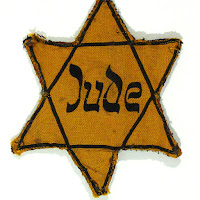He was from a "family of bishops." His brother Herbert preceded him as Bishop of Salisbury, and his father, also named Richard, became Bishop of Winchester. The younger Richard was Bishop of Chichester before taking on the position in Salisbury, and was later Bishop of Durham. He was elected to Durham earlier in his career, but Pope Innocent III would not allow it, knowing that King John wished for his own advisor John de Gray to have that position.
While he was at Salisbury, he moved the cathedral from Old Sarum to the town of Salisbury, founding Salisbury Cathedral in 1220. Legend tells that he shot an arrow that hit a deer, and where the deer fell was the new site. In preparation for the building project, he laid out the town of Salisbury as well.
While at Salisbury, he welcomed the new Franciscan friars (founded in 1209). He created a set of statutes to guide diocesan practices. Because they were re-issued after he moved to Durham, they are known as the Statutes of Durham. They were used by many other dioceses.
When King John died in 1216, leaving nine-year-old Henry III as king, Poore helped Hubert de Burgh take over running the kingdom, along with Archbishop of Canterbury Stephen Langton (under whom Richard had studied at Paris) and Bishop Jocelin of Wells. All four worked together to manage England until Henry reached the age of 14.
I found him interesting because of policies he instituted at Salisbury geared toward children. He instructed his clergy to choose a few children to be educated in church doctrine and prayers so that they could instruct other children. He was willing to provide some teachers with benefices for their financial support provided that they would then teach for free. He also had his clergy preach every Sunday on the dangers of children being left alone in the house with a fire going. Bishop Wordsworth's School in modern day Salisbury has a dormitory named Poore House after Richard Poore's dedication to education; it is regularly declared one of the top-performing schools in England.
Poore felt that no one should hold two benefices at a time, and a person who complained at this rule should lose both. He also did not want his clergy involving themselves in "worldly business." He was not completely harsh toward his clergy: he established a retirement house for Durham clergy.
Although claimed by Salisbury and Durham at his death on 15 April 1237, he had retired to Tarrant Keyneston in Dorset and was buried there.
So what was it about Old Sarum that made its cathedral unsuitable? Why did Poore feel the need for a new town as well as cathedral? Let's visit Old Sarum next time and see what it was like.




